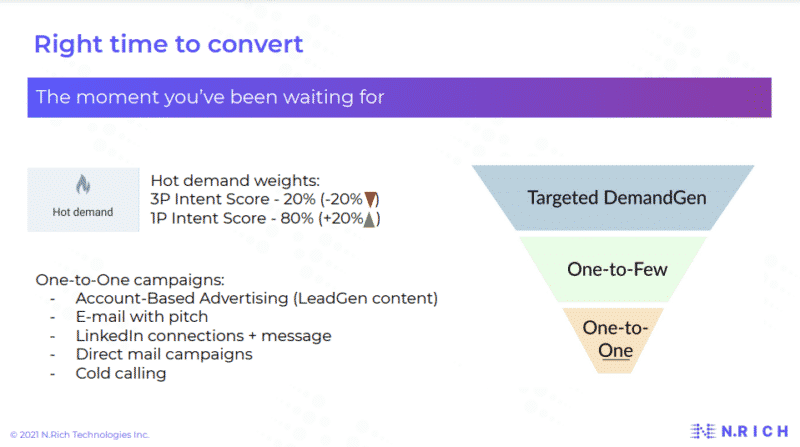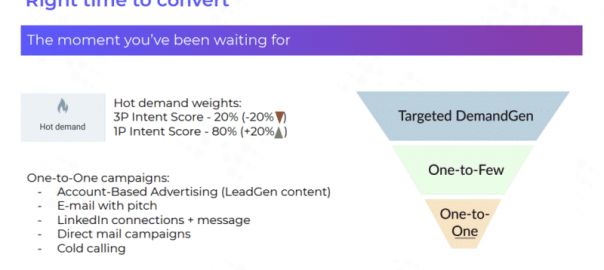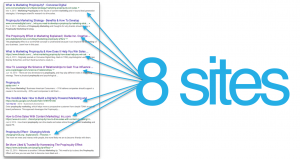Generating buyer interest relies on the combined efforts of marketing and sales.
“Basically, intent data allows marketing and sales teams to focus on the accounts that are in the market for a product or solution,” said Dan Tabaran, CMO of account-based advertising company N.Rich, in his recent MarTech presentation. “That is incredibly valuable for companies that have a huge target account list, as it helps prioritize companies that are ready to buy.”
Not all customers have the same level of intent when they enter your business sales funnel. That’s why marketing and sales teams must determine buyer intent and generate interest so you can divide resources accordingly. Targeting consumers without considering their level of interest means missing out on low-hanging fruit — accounts with high buying intent signals. It’s in marketers’ best interests to use their account-based marketing resources to better understand their customers.
Understanding buyer intent
According to Tabaran, buyer intent is calculated through an aggregation of multiple data sources. This helps marketing and sales teams identify whether or not a customer is looking for more information. “If the user would reach your website while researching a topic, we would then map this topic to a first-party intent belonging to that specific account,” said Tabaran.
He added, “Once you have a good amount of data, you can draw a conclusion about where that account is in their buyer journey.
Siloing your efforts will only make it harder to understand prospective buyers. Here are three ways marketing orgs can work with sales teams to effectively determine and generate buyer interest.
1. Define the intent data
To define your buyer intent data, you’ll need to understand the market for your product or service. Researching relevant keyword phrases and relevant locations are great ways to categorize your audience and craft an ideal customer profile (IDP).
2. Act on buyer interest data
The best way to act on the buyer intent data is to align your sales and marketing efforts. You can then match accounts to your IDP based on the level of intent. “The first step I take is to create campaigns to start driving these accounts to our website, “said Tabaran.
“This is instrumental in driving awareness and keeping your accounts engaged since you can use these visits to retarget these accounts on search display, social media, or any other digital channel,” he added.
3. Nurture customer relationships

Generating first-party intent is crucial for pushing accounts into the purchasing stage, explained Tabaran. Marketers should work to nurture customers depending on which stage of the buyer’s journey funnel they’re in.
“This is where you’ll have to actively work with sales and feed them the intent data you’ve generated through your campaigns,” said Tabaran, “so they can be more tailored in their pitch.”
When marketing teams share relevant account data from their ABM campaigns, sales teams can send more relevant feedback on leads and opportunities generated. Both teams are needed to generate buyer interest.
The post 3 ways marketing and sales teams can generate buyer interest appeared first on MarTech.
(24)








